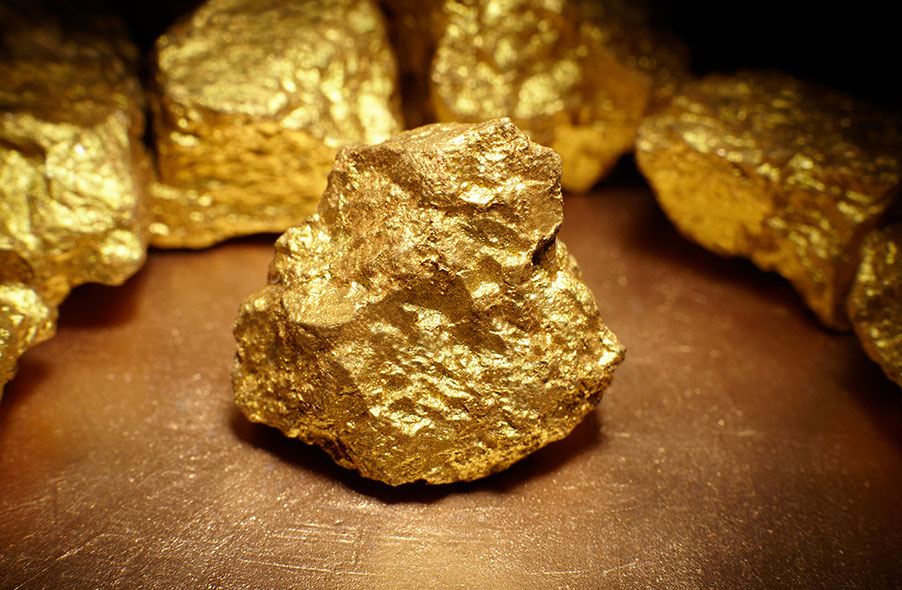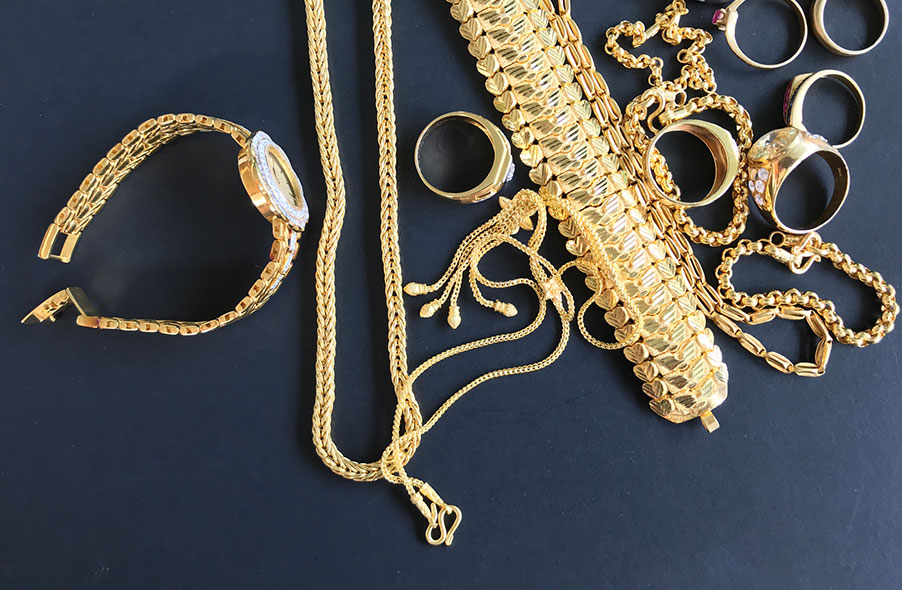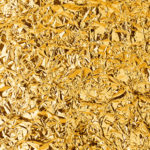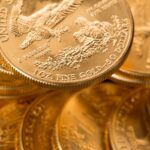Is gold magnetic? It’s important to understand whether gold is magnetic, so you can quickly determine whether your coins or jewelry contain pure gold. While gold is generally non-magnetic, anything less than 24-carat gold contains other materials to harden it and become more resistant to scratches.
Ordinary magnetic fields don’t attract gold, but a massive magnetic field can make this precious metal slightly magnetic.
If your ‘pure gold’ jewelry is magnetic, chances are that it contains a magnetic material, like iron or nickel. Magnetism is one of the simplest ways to tell if your jewelry or coin is pure gold. However, not being attracted to a magnetic doesn’t necessarily mean that you have pure gold.
Scammers usually coat other non-magnetic materials like aluminum, copper, and lead with gold. Professionals use a combination of magnetics, electronic tests, chemical tests, and density to tell if a coin or jewelry is gold. Read on to learn more about gold and magnetism.
How Does a Magnet Work?
A magnet is a piece of metal with properties to attract other metals. The largest magnet is the Earth, with two ends known as poles—the North Pole and the South Pole. The Earth also has an invisible magnetism area surrounding it known as a magnetic field.
Billions of positively charged atoms generate negatively charged electrons. These electrons rotate around an atom’s core to produce a magnetic force and transform the atom into a tiny magnet.
Most materials have the atoms arranged in a way that the magnetic forces point in random directions. Other materials have the atoms set such that the magnetic forces mostly face the same direction. When the magnetic forces merge, it makes the object act like a magnet.
One magnet’s north pole attracts another magnet’s south pole but repels its north pole. In other words, the same poles repel and unlike poles attract. If a metal repels a known magnet, then it’s also a magnet.
Magnetic Metals
Magnetic metals include iron, cobalt, samarium, nickel, gadolinium, and neodymium. Cobalt is one of the essential raw materials in manufacturing batteries, aircraft engine parts, and coloring for glasses and ceramics. Iron, on the other hand, is the primary raw material for steel production.
The primary use of nickel is to plate other metals to prevent corrosion. Many manufacturers use this metal to make alloys like stainless steel used in making household appliances. You may also find it in jewelry and coins.
Many manufacturers use neodymium in alloys with iron and boron to make permanent magnets. A permanent magnet retains its magnetic properties without needing an inducing field or current. These magnets are common in microphones, mobile phones, loudspeakers, and electronic instruments.
Combined with cobalt, samarium can make powerful magnets that are usually used in microwave applications because they retain their magnetic properties even at high temperatures. Another important use of these magnets is in manufacturing devices like headphones and personal stereos.
Gadolinium plays an integral role in various alloys. Its primary uses are in magnets, electronic components, and data storage disks. People also use the compounds of this metal in magnetic resonance imaging (MRI), especially in detecting cancerous cells.
The magnetism of materials can be categorized into five primary groups:
- Diamagnetism
- Paramagnetism
- Ferromagnetism
- Ferrimagnetism
- Antiferromagnetism
Diamagnetic and paramagnetic materials show no collective magnetic interactions and aren’t magnetically ordered. Ferromagnetic, ferrimagnetic, and antiferromagnetic materials show long-range magnetic order below a specific temperature.
Ferromagnetic and ferrimagnetic are generally considered magnetic. The materials in the other three groups have weak magnetic properties and are typically regarded as non-magnetic.
Non-Magnetic Metals

Non-magnetic metals include pure gold, aluminum, silver, copper, lead, and brass. These are soft metals, and you can make them stronger and magnetic by adding steel or iron to them. Common uses for gold include coins, electronics, jewelry, aerospace, dentistry, and awards.
Silver is also standard in coins and jewelry. You may also find it in mirrors, tableware, and anti-bacterial products. Manufacturers usually use aluminum in making kitchen appliances, cans, airplane parts, window frames, and beer kegs.
You’ll often find copper in electrical equipment and coins. Many musical instruments use brass, but you can also find this metal in alloys for water transportation. Lead is an important raw material in the manufacture of hair dyes, paint, and piping. However, since researchers discovered its toxicity, most lead uses have been banned. You can still find lead in car batteries and the storage of corrosive liquids.
Is Gold Jewelry Magnetic?
When testing 22-carat, 18-carat, and 14-carat gold jewelry, you may find that the clasp and other fasteners contain ferromagnetic materials. Ferromagnetism is the strongest type of magnetism. Ferromagnetic materials exhibit strong attractions to magnetic fields and often retain magnetic properties for some time, even after the external magnetic field’s withdrawal.
Impure gold jewelry often contains copper-infused with less than .999 purity to harden it and make it more resistant to warping or wear. However, most 22-carat and less pure gold jewelry shouldn’t be ferromagnetic and not be attracted to magnets.
Gold-Plated vs. Real Gold

What does it mean when a magnet attracts your gold item? Your item is either fake, impure, or gold-plated. However, gold-plated or impure gold isn’t necessarily a scam because there may be genuine reasons for it.
Since this precious metal is soft and malleable, manufacturers usually mix it with other metals to create a harder gold alloy. Jewelry made from 24-carat or 99.9% fine gold is highly vulnerable to damage. Therefore, most jewelry features 18-carat or 9-carat gold.
The resultant alloy may have magnetic properties depending on the metal mixed with gold. If you mix gold with silver, for example, you’ll get a non-magnetic white gold. On the other hand, iron mixed with gold results in a highly magnetic alloy.
Gold plating involves wrapping a base metal with a thin layer of the precious metal. Many manufacturers do this procedure as a cost-cutting technique. However, gold-plating is also common in electronics to protect other components from tarnishing or erosion.
Magnetism as a Test for Gold
We’ve already observed that a gold alloy’s magnetism depends on the metal used in its production. Therefore, you can only use a magnet as a rough estimate of gold’s purity. The only thing you can be sure of is that if a magnet attracts your gold, then it’s not pure gold.
That means magnetic testing can come in handy for some gold bars and coins. If a dealer claims a gold coin to be 99% pure, you should expect a magnet not to attract it.
Nonetheless, it’s essential to invest in more reliable testing methods. You might want to consider looking for hallmarks or conducting acid tests. Another excellent approach to determining the purity of gold is working with a reputable gold dealer or jeweler.
Other Ways To Test if An Item Is Made from Pure Gold
Here are a few more effective ways to determine the fineness of your gold products:
- For coins, bars, and rounds, you can check their size and weight and make sure you test them within tolerances.
- You can subject gold coins to an acid test. It’s worth noting that acid may tarnish the surface of the gold coin. Therefore, it’s best to use this method sparingly and with non-collectible coins.
- Test the metallic properties of your precious metal products using an audio spectrum analyzer or X-ray spectrometer.
- Find a reputable bullion or coin dealer to authenticate your gold items. The dealer can test the contents of your bars, coins, rounds, watches, and other gold products.
Can A Metal Detector Find Gold?
While gold isn’t magnetic in its pure form, some metal detectors can find it. If you’re using a metal detector that operates at lower frequencies, you may not be able to detect this precious metal because of its low conductivity.
However, if your metal detector operates at a higher frequency, you may be able to detect the precious metal. The reason for this is that gold has a higher conductivity with high-frequency waves. Multi-frequency and PI-type metal detectors are the most effective for detecting gold, but they are quite costly.
Conclusion
Pure gold is not magnetic, but gold mixed with other materials can be magnetic. The magnetism of a gold alloy mostly depends on the metal with which it is mixed. You can use magnetic testing to test whether your gold items are made of pure gold.
However, experts recommend using more advanced methods to test this precious metal’s purity because not all non-magnetic materials are pure gold.
Learn about Gold is your one-stop destination for everything concerning gold—you’ll find blog posts and articles about the latest trends in the gold market. You’ll also find all the vital information you need to decide whether to add gold to your investment portfolio.
We are also experts at matching potential investors with the best gold IRA providers on the market. If you’re looking to invest in gold, visit our website to find out how our gold investment partners can help you realize your investment dreams.





